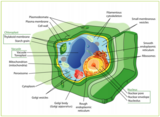
- Subject:
- Biology
- Life Science
- Material Type:
- Module
- Author:
- Beatriz Carramolino
- Date Added:
- 12/07/2016

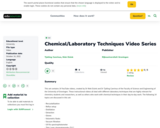
This set contains 14 YouTube videos, created by Dr Niek Eisink and Dr Tjalling Canrinus of the Faculty of Science and Engineering of the University of Groningen. These instructional videos all deal with different laboratory techniques that are highly relevant for chemistry students and researchers, as well as others who work with chemical techniques in their day-to-day work. The following 14 topics are discussed in this set:
- Recrystallization
- Reflux setup
- Distillation
- Extraction
- Gloves
- Volumetric flasks
- Vacuum filtration
- UV-Vis spectrophotometer
- Thin Layer chromatography (TLC)
- Column chromatrography
- Schlenk line
- Greasing glass joints
- Micropipettes
- Rotary evaporator
The videos aim to be useful tools for current students and staff, professionals who are looking for a refresher on fundamental laboratory techniques, and other educators who want use these videos in their teaching and lab instruction.
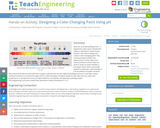
How can an understanding of pH—a logarithmic scale used to identify the acidity or basicity of a water-based solution—be used to design and create a color-changing paint? This activity provides students the opportunity to extract dyes from natural products and test dyes for acids or bases as teams develop a prototype “paint” that is eventually applied to help with a wall redesign at a local children’s hospital. Students learn about how dyes are extracted from organic material and use the engineering design process to test dyes using a variety of indicators to achieve the right color for their prototype. Students iterate on their dyes and use ratios and proportions to calculate the amount of dye needed to successfully complete their painting project.
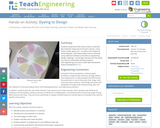
Students experiment with various ways to naturally dye materials using sources found in nature—roots, leaves, seeds, spices, etc.—as well as the method of extracting dyes. Then they analyze various materials using statistical methods and tackle an engineering design challenge—to find dyes that best suit the needs of a startup sustainable clothing company.
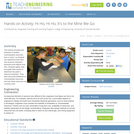
This activity simulates the extraction of limited, nonrenewable resources from a "mine," so students can experience first-hand how resource extraction becomes more difficult over time. Students gather data and graph their results to determine the peak in resource extraction. They learn about the limitations of nonrenewable resources, and how these resources are currently used.

This seminar is designed to be an experimental and hands-on approach to applied chemistry (as seen in cooking). Cooking may be the oldest and most widespread application of chemistry and recipes may be the oldest practical result of chemical research. We shall do some cooking experiments to illustrate some chemical principles, including extraction, denaturation, and phase changes.
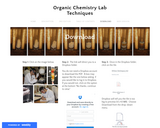
This resource was created by Lisa Nichols (chemistry faculty at Butte Community College in Northern California) as a result of an academic sabbatical leave in the Fall-2015 to Spring 2016 term. The target audience are undergraduate students in organic chemistry.
In this resource you will find theory and procedures on the main organic lab techniques (chromatography, crystallization, extraction, distillation) as well as general concepts on how to set up and heat apparatuses (see the Table of Contents tab for a more complete listing of topics).
All procedures are accompanied by step-by-step pictures, and graphics are heavily utilized throughout the resource.

This resource is a video abstract of a research paper created by Research Square on behalf of its authors. It provides a synopsis that's easy to understand, and can be used to introduce the topics it covers to students, researchers, and the general public. The video's transcript is also provided in full, with a portion provided below for preview:
"Today, millions of people throughout the world lead richer, more productive and comfortable lives thanks to the thousands of chemicals poured into modern products and services. That makes the effective use and handling of chemicals and waste more important than ever. The United Nations’ 2030 Agenda for Sustainable Development outlines a plan of action for “preserving peace, people, prosperity, and our planet”. Central to that plan is the sound management of chemicals and waste, wherein reduction and renewable resources are key. Here’s where materials like cellulose play an important role. Cellulose is the most abundant natural polymer on earth, and one of the most in-demand. That’s because on top of being non-toxic and biodegradable, cellulose also tends to be lighter, cheaper, and stronger than other commercial polymers. There’s only one problem..."
The rest of the transcript, along with a link to the research itself, is available on the resource itself.

This course serves as an introduction to the fundamental principles of separation operations for the recovery of products from biological processes, membrane filtration, chromatography, centrifugation, cell disruption, extraction, and process design.
This course was last taught during the regular school year in the Spring semester of 1999, but has been a part of the MIT Technology and Development Program (TDP) at the Malaysia University of Science and Technology (MUST), as well as at MIT’s Professional Institute in more recent years.

Learn the simple tools and the method for extracting DNA from plant cells, and why each step is performed.
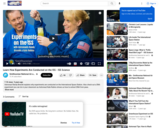
Astronaut Randy Bresnik explains why experiments are conducted on the International Space Station. Astronaut Kate Rubins shows us how to extract DNA from peas.